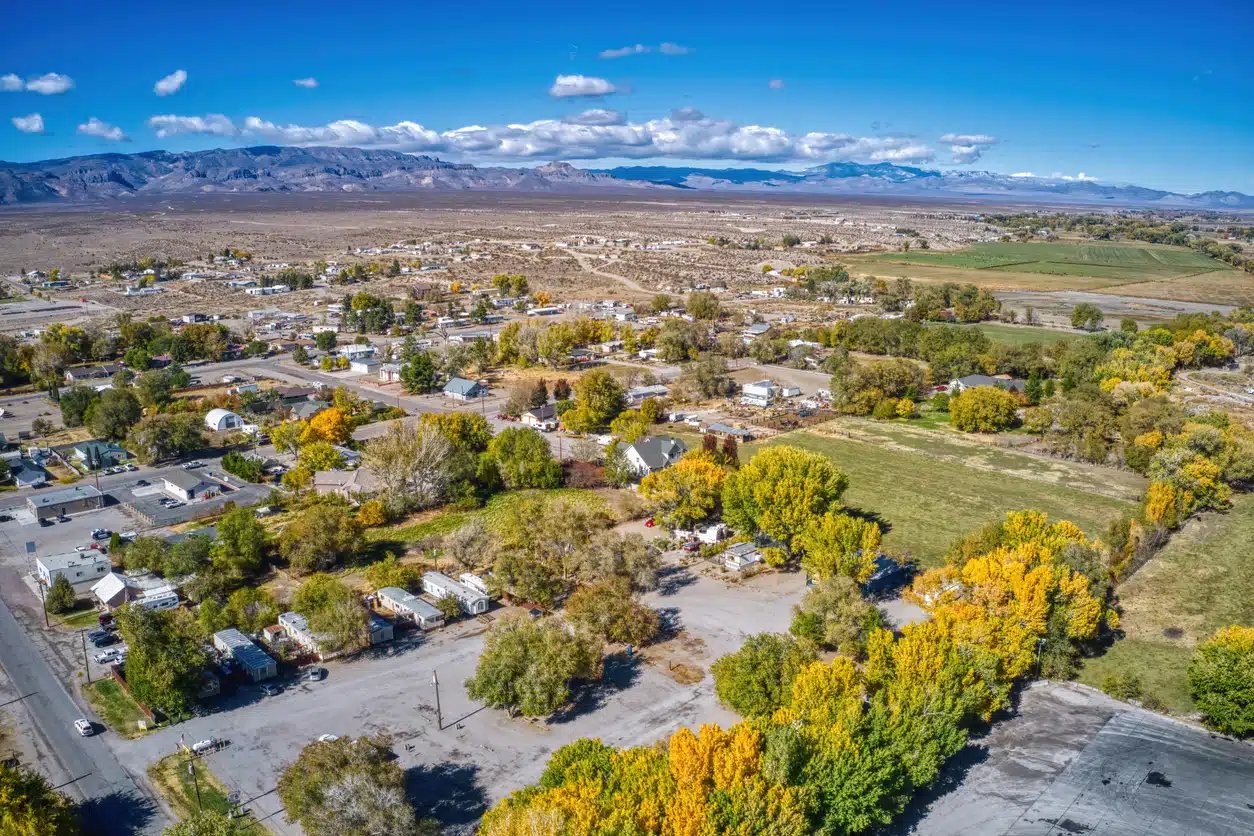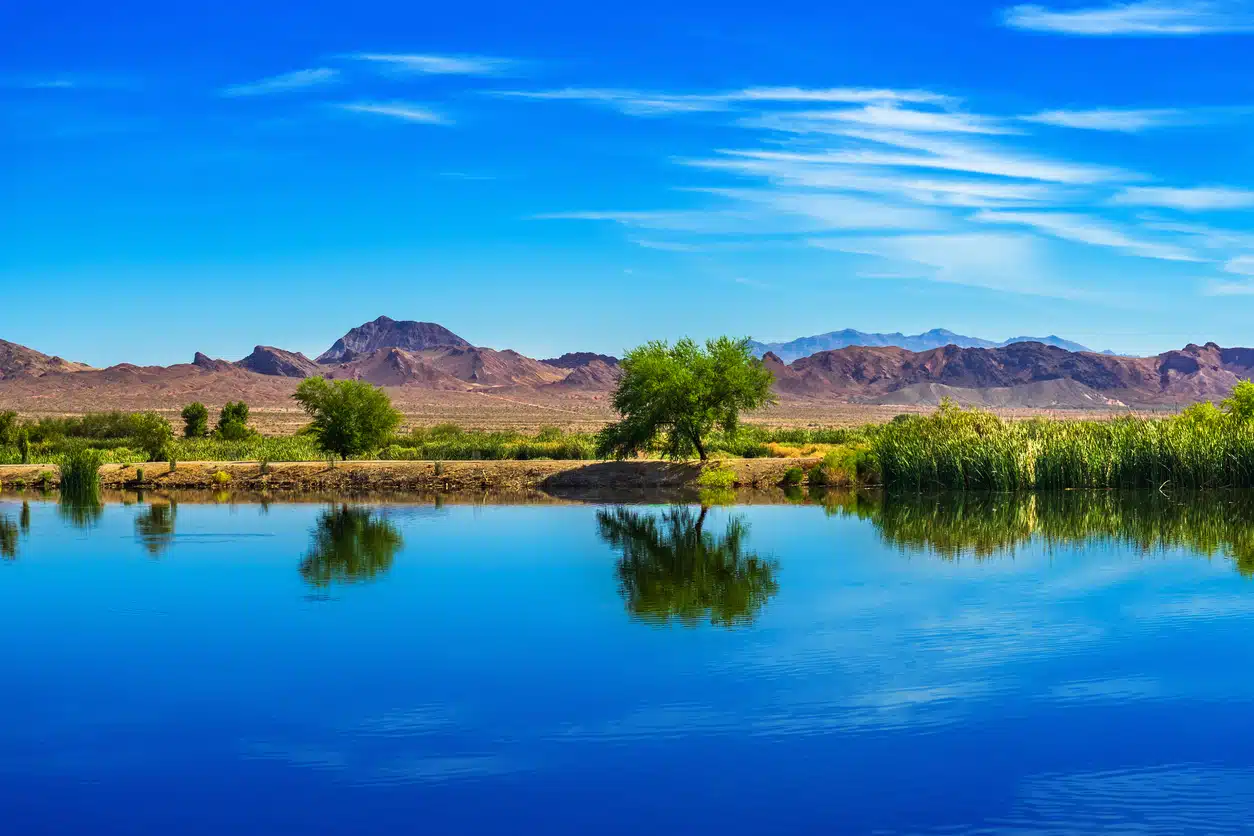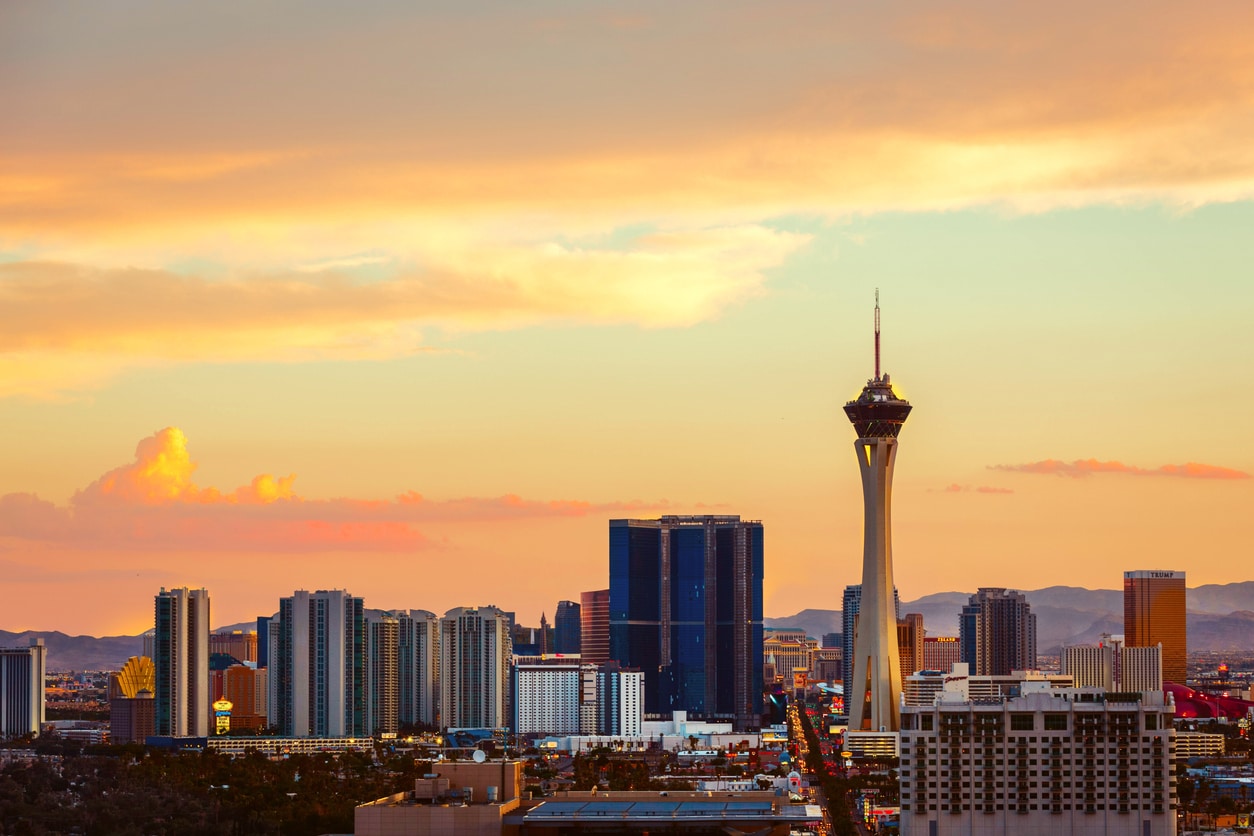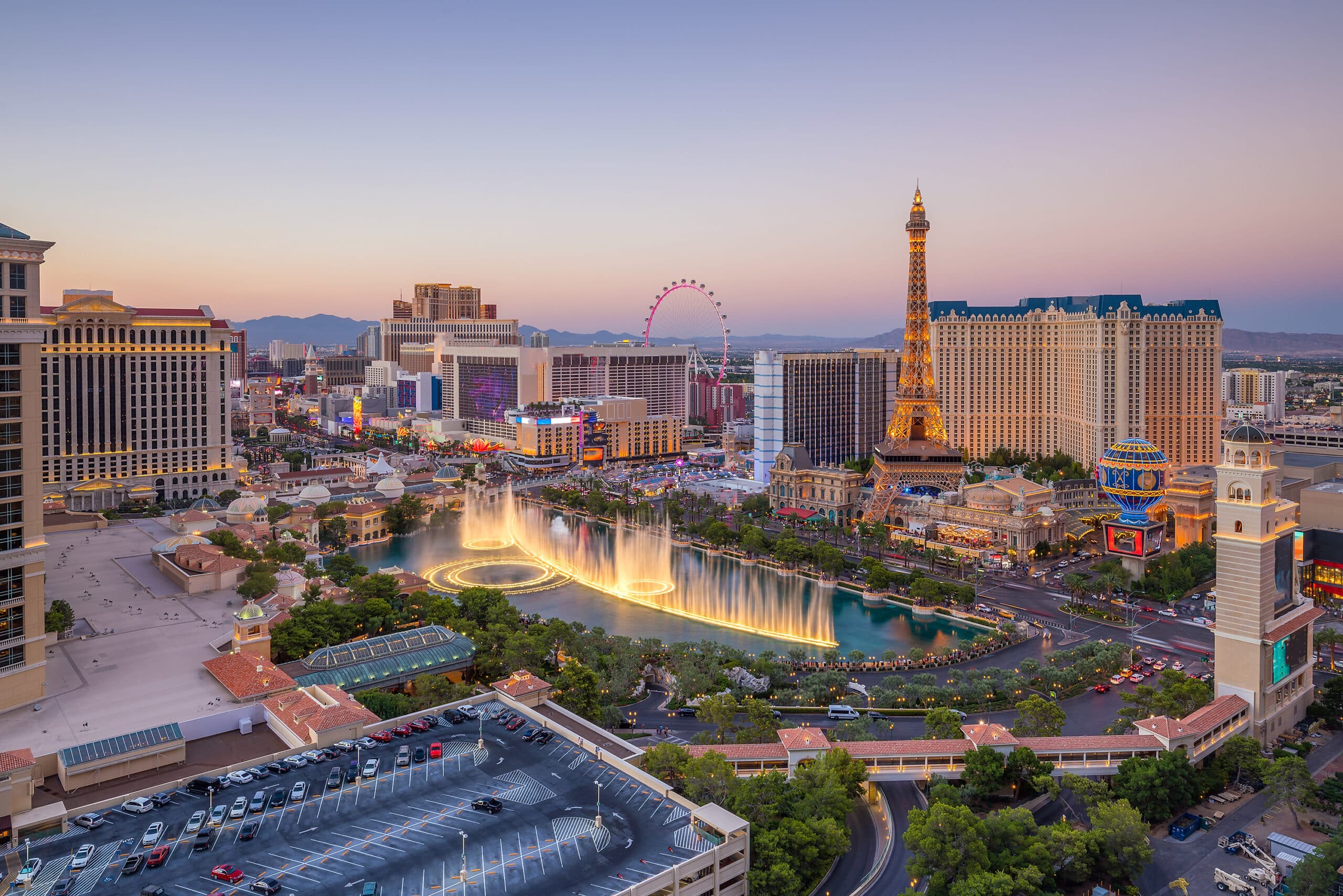You don’t have to love slot machines or desert heat to fall for Nevada (but, hey, it doesn’t hurt!).
Nevada has a lot going for it, including no state income tax, reasonable housing costs, and nearly 300 days of sunshine a year. That’s why so many people are packing up and moving to Nevada — especially from California. (Between 2020 and 2023, nearly 158,000 Californians made the switch to Nevada, drawn by lower cost of living, wide-open spaces, and a lifestyle that trades congestion for calm.)
Before making the decision to move to Nevada, it’s important to know both the pros and the cons.. In this article we take an honest look at the cost of living, the housing market, job opportunities, crime rates, and things to do in Nevada. If you’re considering moving long-distance to the Silver State, this guide will help you make the call.
Living in Nevada: Quick Facts
Population: Approximately 3.27 million
Median Age: 39.4 years
Cost of Living: 1% lower than the U.S. average
Median Household Income: $75,000
Average Home Value: $455,217
Average Rent: $1,538 per month
Fun Fact: Nevada is home to 314 named mountain ranges — more than any other state in the continental United States.
10 Pros and Cons of Living in Nevada
Living in Nevada has plenty of perks. Las Vegas is, of course, a destination for entertainment. Outside that well-known city, the state’s wide-open spaces give you plenty of room to roam, including dozens of state and national parks. And no state taxes and low property taxes help put some money back in your pocket. But those benefits come with some trade-offs. Moving out of state to Nevada can come with challenges, especially with regard to housing, health care, and of course, the hot summers.
Exploring the pros and cons of living in Nevada will help you get a clearer picture of what day-to-day life really looks like. Think of it as your no-nonsense tour before you make that moving checklist and pack the moving truck.
Pro Tip: Getting ready to move? Use these moving apps to help organize without too many headaches. |
1. PRO: Nevada offers a competitive cost of living
The overall cost of living in Nevada is attractive, running approximately 1% lower than the national average. While housing costs in Nevada are about 6% higher than the national average, and possibly due in part to the heat of the summer, utilities run 8% higher, these are offset by lower costs in other areas. Health care costs in Nevada are 11% below the national average, and goods and services come in at 14% less.
To put it in perspective, someone earning $100,000 in Los Angeles would need only about $70,000 to maintain the same standard of living in Reno.
Compared to Texas, Nevada runs a bit higher overall — around 7.7% more — mostly due to housing and grocery costs. But many still find the tradeoff worthwhile for the tax perks and lifestyle.
Keep in mind as well the average numbers mask wide variations across the state of Nevada. Las Vegas and Reno have a higher cost of living than the state’s average, but places such as Carson City or Boulder City are much more affordable.

2. CON: Housing prices are on the rise in Nevada
Home prices in Nevada aren’t what they used to be. As of early 2025, the average home value sits around $455,000 — up more than 3% from the previous year. House prices in Las Vegas and Reno will take an even bigger bite out of your budget. The average home in Reno is close to $570,000. For first-time buyers, that’s a tough hill to climb.
Stack those home prices against Texas, where homes average about $300,000, and you can see why housing prices are listed as a con. But it’s all relative. Compared to California, where the average home costs over $900,000, Nevada looks pretty affordable.
Not ready to commit to buying? The statewide average to rent an apartment in Nevada is around $1,466 per month. Here’s how it breaks down by size:
Prices vary by city, but the trend is clear: Housing costs in Nevada are going up, not down.
3. PRO: You can save money on your taxes by living in Nevada
Nevada doesn’t tax personal income. That means more money in your pocket every month — especially if you’re coming from states like California or Oregon with tax rates of 13.3 and 9.9 respectively. No state tax on wages, retirement income, or Social Security makes it an appealing landing spot for both working professionals and retirees.
You’ll still pay sales tax ad property tax, but those rates are moderate compared to national averages. Nevada’s average property tax rate is about 0.44%, well below California’s 0.70% and Texas’s 1.36%.
If you’re looking to stretch your paycheck or protect your retirement income, living in Nevada gives you more breathing room.
4. CON: Wages below the national average make meeting cost of living in Nevada a challenge
The Nevada economy is growing — but paychecks aren’t keeping up. While the state has added jobs in tech, logistics, and advanced manufacturing, average wages still fall short of the national rate. As of 2025, the average hourly wage in Nevada is about $21.19, the lowest in the nation.
Unemployment is another wrinkle. At 5.8%, Nevada’s jobless rate sits above the national average. Most of that comes from the seasonal swings in hospitality. During off-season months, it’s not unusual to see layoffs in hotels, casinos, and restaurants.
So what salary do you need to live in Nevada? According to MIT’s Living Wage Calculator, a single adult with no children needs to earn at least $38,476 annually to cover basic needs in Nevada. For a family of four with two working adults, that number jumps to $108,000.
The reality: The gap between salary and the cost of living can catch newcomers off guard — especially if they're moving from a city or state with higher wages.

5. PRO: Nevada is full of natural beauty for outdoor lovers
If you like camping, hiking, and exploring the great outdoors, Nevada delivers. Nearly 85% of the state is public land — more than any other in the continental United States. That means opportunities for outdoor adventures are never far away.
Red Rock Canyon, Lake Tahoe, the Ruby Mountains, Great Basin National Park — the list of places to explore reads like a bucket list. You can hit a desert trail in the morning and be paddleboarding by afternoon. Even in urban areas like Las Vegas or Reno, world-class recreation is within a 30-minute drive.
6. CON: The desert climate of Nevada can be tough to handle
Summers are sizzling in Nevada. Most of Nevada is in either the Great Basin high desert or the Mojave Desert ecoregion, and as deserts go, the climate is hot and dry.
In Las Vegas, average daily highs in July are around 105°F (40.5°C), with temperatures often exceeding 110°F (43°C). Couple that with the fact that Nevada is the driest state in the U.S., averaging less than 10 inches of rain annually. That means chapped lips, dry skin, and wildfires are part of life when you move to Nevada. Air quality can also take a hit, especially during fire season or heavy dust storms.
If you're used to mild summers or a little humidity, the climate in Nevada can be a shock to the system. It takes adjustment — and a lot (we mean a lot) of hydration.

7. PRO: From the neon glitz of casinos to offbeat arts scenes, Nevada is overflowing with culture
The first thing that comes to mind when you think Nevada is the casinos and big-ticket shows of Las Vegas and Reno. Las Vegas headlines with world-class entertainment, from Cirque du Soleil residencies and Michelin-star restaurants to music festivals such as the Electric Daisy Carnival (EDC) that take over the desert.
But Nevada is more than casinos. Outside the Strip, you’ll find a whole different scene. Reno, which does have its fair share of casinos, has its own vibe. As host to the offbeat Burning Man festival, it keeps that arts-forward vibe going year-round with galleries, maker spaces, and indie venues scattered through Midtown. Small towns throughout the state, boast their own cultural activities. You’ll find festivals that celebrate cowboy poetry and Basque heritage in Elko, a Native American pow wow in Carson City, and a motorcycle rally in Winnemucca. There are also plenty of art galleries, history museums, and ghost towns to explore.
8. CON: Crime rates are high in urban areas of Nevada
Choosing where to live in Nevada means taking a hard look at crime. Safety varies depending on where you land. Cities such as Las Vegas and Reno see higher crime rates than the national average, especially when it comes to property crime and theft.
In Las Vegas, the violent crime rate is approximately 4.6 incidents per 1,000 residents annually, placing the city in the 23rd percentile for safety in the United States. Reno reports a violent crime rate of about 572 incidents per 100,000 residents, which is 54.6% higher than the national average.
However, crime in Nevada tends to cluster. Some neighborhoods are high-risk, while others are downright quiet. If you're moving to Nevada, take the time to check crime maps, talk to locals, and get a feel for the area — because safety in Nevada can change from one ZIP code to the next.

9. PRO: Nevada’s infrastructure makes road trips easy
If you love the open road, Nevada makes it easy to roam. According to a 2023 report by LendingTree, 85.5% of Nevada's roads are in acceptable condition, and only 0.8% of its bridges are considered in poor condition, placing the state second overall for road infrastructure quality.
Traffic outside of major cities is minimal, and even urban congestion doesn’t come close to the gridlock you’ll find in places like Los Angeles or Phoenix.
Two main interstates cross the state – I-80 cuts across the north and I-15 runs the southern corridor, with scenic byways connecting everything in between.
Whether you're heading to Tahoe for the weekend or just chasing a desert sunset, the drive itself is as much a reward as the destination. Nevada may be big, but it isn’t hard to navigate.
10. CON: Health care access and quality vary widely by region
Nevada ranks near the bottom in national health care access — and where you live in the state makes a big difference. In Las Vegas or Reno, you’ll find major hospitals and a growing network of specialists. But outside those hubs? Options run low.
According to the Commonwealth Fund, Nevada ranks 41st out of 50 states for overall health care performance. The state faces ongoing shortages in primary care, especially in rural areas. Many counties have limited hospital access, long wait times, and few mental health providers.
If you have ongoing health needs or want plenty of choices for care, living in Nevada might come with trade-offs — especially if you settle outside the big cities.
Best Places to Live in Nevada
Once you have a grasp of the pros and cons of the state of Nevada, it’s time to choose where to move. Here are a few options outside of well-known Las Vegas and Reno.
Incline City: Located on the eastern North Shore of Lake Tahoe, this town got its name for the Great Incline Tramway built by loggers in 1878. Known for its beautiful homes and stunning mountain views, this close-knit community has plenty of activity year round, from farmers markets and festivals to holiday parades.
Henderson: Rated one of the best suburbs of the Las Vegas area, Henderson offers a quieter way of life while still being close enough to experience the fun of the big city. With eight championship golf courses and a thriving arts district, there’s always plenty to do.
Ely: If you’re craving a small-town atmosphere, Ely is a great place to live. Surrounded by rugged mountains, there’s plenty of opportunity for outdoor adventure. You’ll also find a stable economy and convenient access to health care.
Ready to Roll the Dice on Nevada?
Living in Nevada comes with a mix of wins and drawbacks. But unlike when you gamble, you know what you’re getting. Lower taxes, stunning landscapes, and room to roam make it appealing — especially for folks leaving high-cost states. But rising housing prices, regional gaps in health care, and scorching summers mean it’s not a perfect fit for everyone.
If the wide-open spaces and proximity to the excitement of Las Vegas is your thing, and you’re okay navigating the challenges, then moving to Nevada might be in the cards. When you're ready to make it happen, Colonial Van Lines can help you get there. With over 50 years of experience in long-distance moving, Colonial handles everything from packing and loading to transport and set up.
Start your move the right way with a free quote from Colonial Van Lines today.

